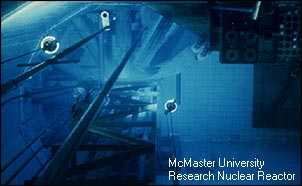3-in-1 Alternative Energy Car DIY STEM Kit
$19.99$12.95
 Cerenkov radiation is exactly that -- but for light. If a particle moves faster
than the speed of light, it must create a shockwave, and radiate energy. Now we can
return to the actual question -- if relativity states that the speed of light can
not be exceeded, how can there be Cerenkov radiation?
Cerenkov radiation is exactly that -- but for light. If a particle moves faster
than the speed of light, it must create a shockwave, and radiate energy. Now we can
return to the actual question -- if relativity states that the speed of light can
not be exceeded, how can there be Cerenkov radiation?
 'I beseech you to take interest in these sacred domains so expressively called laboratories. Ask that there be more and that they be adorned for these are the temples of the future, wealth and well-being. It is here that humanity will grow, strengthen and improve. Here, humanity will learn to read progress and individual harmony in the works of nature, while humanity's own works are all too often those of barbarism, fanaticism and destruction.'
'I beseech you to take interest in these sacred domains so expressively called laboratories. Ask that there be more and that they be adorned for these are the temples of the future, wealth and well-being. It is here that humanity will grow, strengthen and improve. Here, humanity will learn to read progress and individual harmony in the works of nature, while humanity's own works are all too often those of barbarism, fanaticism and destruction.'